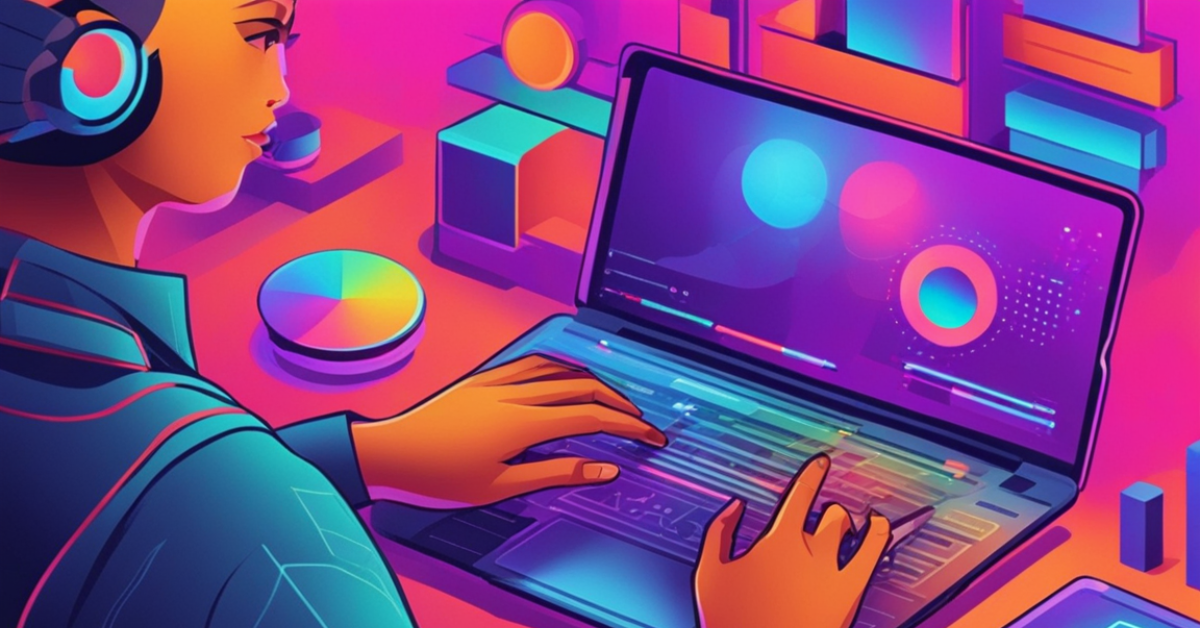In today’s rapidly evolving digital landscape, the fusion of artificial intelligence (AI) and animation has brought about a groundbreaking transformation in the realm of visual storytelling. With AI animation at the forefront, traditional methods of 2D and 3D animation are being revolutionized, leading to the emergence of new techniques and applications that are reshaping the way narratives are told and experienced. In this comprehensive guide, we’ll delve into the profound impact of AI animation on visual storytelling, exploring its techniques, applications, and the evolving landscape of animation technology.
At the heart of this transformation lies AI animation, a dynamic field that leverages cutting-edge technologies to reimagine the process of content creation. By harnessing the power of AI algorithms, 3D animation and machine learning frameworks, animators are empowered to transcend the limitations of conventional animation methodologies, unlocking unprecedented levels of creativity, efficiency, and realism. From character design and motion capture to scene composition and visual effects, AI animation permeates every facet of the production pipeline, revolutionizing the way stories are conceived, crafted, and conveyed.
In this comprehensive guide, we embark on a journey to explore the profound impact of AI animation on the landscape of visual storytelling. We delve deep into its intricacies, uncovering the diverse array of techniques and applications that underpin its transformative influence. Through a nuanced examination of AI-driven animation, we illuminate the myriad ways in which this innovative approach is reshaping the narrative landscape, propelling storytelling into uncharted territories of imagination and immersion.
UNDERSTANDING AI ANIMATION
At its core, AI animation refers to the utilization of artificial intelligence algorithms and techniques to automate and enhance various aspects of the animation process. By leveraging machine learning, deep learning, and other AI technologies, animators can streamline production workflows, create lifelike characters, and generate dynamic visual effects with unprecedented efficiency and realism.
THE EVOLUTION OF ANIMATION TECHNOLOGY
Traditionally, animation has been dominated by manual processes, where animators painstakingly crafted each frame by hand. While 2D animation has a rich history dating back to the early days of animation, the advent of 3D animation introduced a new dimension to storytelling, enabling more immersive and visually stunning narratives. However, the rise of AI animation has ushered in a new era of innovation, allowing animators to push the boundaries of creativity and storytelling.
One of the most significant applications of AI animation lies in enhancing narrative storytelling. Through advanced algorithms and machine learning techniques, AI can analyze story scripts, generate character animations, and even predict audience reactions, enabling animators to create more engaging and emotionally resonant narratives. Whether it’s creating lifelike characters or generating realistic environments, AI-driven visual narratives are redefining the art of storytelling.
AI-DRIVEN VISUAL EFFECTS
In addition to 3D product animation, AI is also revolutionizing the creation of visual effects in animation. From complex simulations to dynamic particle systems, AI algorithms can generate stunning visual effects that were once only possible through manual labor or expensive software packages. By automating tedious tasks and accelerating the production process, AI animation enables animators to focus more on creativity and storytelling.
One of the key advantages of animation software lies in its ability to leverage AI and machine learning capabilities to automate and optimize various aspects of animation production. For instance, advanced rigging systems equipped with AI algorithms can generate complex skeletal structures for characters, enabling animators to achieve lifelike movements with minimal effort. Similarly, motion capture technologies integrated into animation software allow animators to record and analyze real-world movements, facilitating the creation of highly realistic character animations.
EVOLVING TRENDS IN ANIMATION
As AI animation continues to evolve, we’re witnessing a shift in animation trends and techniques. From procedural animation to real-time rendering, animators are exploring new approaches to storytelling that leverage the power of AI and machine learning. Additionally, interactive storytelling techniques are gaining traction, allowing audiences to actively engage with animated narratives through immersive experiences and user-generated content.
One significant trend that has emerged is procedural animation, which utilizes algorithms to dynamically generate animations based on predefined rules and parameters. Unlike traditional keyframe animation, which requires animators to create each frame manually, procedural animation automates the animation process, allowing for the creation of complex and organic movements with greater efficiency and realism. This approach enables animators to explore new aesthetic possibilities and create dynamic, fluid animations that breathe life into characters and environments.
THE FUTURE OF AI ANIMATION
Looking ahead, the future of AI animation is filled with boundless possibilities. As AI technology continues to advance, we can expect to see even more sophisticated animation techniques and applications emerge. From personalized storytelling experiences to AI-generated content, the potential for AI animation to revolutionize visual storytelling is truly limitless.
CONCLUSION
AI animation is transforming the landscape of visual storytelling, ushering in a new era of creativity, innovation, and immersive experiences. By leveraging advanced AI algorithms and techniques, animators are pushing the boundaries of what’s possible, creating captivating narratives that captivate audiences around the world. As we continue to explore the intersection of AI and animation, we can look forward to a future where storytelling knows no bounds.
FREQUENTLY ASKED QUESTIONS
AI animation refers to the use of artificial intelligence algorithms and techniques to automate and enhance various aspects of the animation process. Unlike traditional animation methods, AI animation leverages machine learning, deep learning, and other AI technologies to streamline production workflows and achieve unprecedented creativity and realism.
AI-driven animation techniques include procedural animation, real-time rendering, and interactive storytelling. Procedural animation utilizes algorithms to generate animations dynamically based on predefined rules and parameters, while real-time rendering enables animators to render high-quality images and animations in real time using advanced rendering algorithms. Interactive storytelling techniques allow audiences to actively engage with animated narratives through immersive experiences and user-generated content.
AI animation enhances narrative storytelling by enabling animators to analyze story scripts, generate lifelike characters, and predict audience reactions using advanced algorithms and machine learning techniques. This results in more engaging and emotionally resonant narratives, as AI-driven visual narratives redefine the art of storytelling with realistic characters and environments.
Animation software plays a crucial role in enabling AI-driven animation techniques by providing animators with access to a wide range of tools and features that leverage AI and machine learning capabilities. From character rigging and motion capture to facial animation and lip-syncing, animation software empowers animators to bring their creative visions to life with greater efficiency and precision.
Emerging trends in AI animation include procedural animation, real-time rendering, and interactive storytelling. These trends reflect animators’ exploration of new approaches to storytelling that leverage the power of AI and machine learning to push the boundaries of creativity and immersion.












 (03KEUPK4394K1ZN)
(03KEUPK4394K1ZN)